A Current-to-Voltage DC-DC Converter for Powering Backbone Devices of Scientific Cabled Seafloor Observatories
Abstract
:1. Introduction
2. Startup Operation of the Proposed Current-to-Voltage Converter
3. Circuit Topology
4. Analysis of the Operating Principle
4.1. Steady-State Analysis
4.1.1. No-Load Condition
4.1.2. Loading Condition
4.2. Operating Principles
5. Experiment Results
6. Conclusions
Author Contributions
Funding
Acknowledgments
Conflicts of Interest
References
- Massion, G. Ocean Observing Systems: Vision and Details. In Proceedings of the MTS/IEEE OCEANS 2006, Boston, MA, USA, 18–21 September 2006; pp. 1–6. [Google Scholar]
- Lyu, F.; Zhou, H.; Peng, X.; Yue, J.; Wang, P. Technical preparation and prototype development for long-term cabled seafloor observatories in Chinese marginal seas. In SEAFLOOR OBSERVATORIES: A New Vision of the Earth from the Abyss; Favali, P., Beranzoli, L., Eds.; Springer: Berlin, Germany, 2015; pp. 503–529. [Google Scholar]
- Lyu, F.; Zhou, H.; Yue, J.; He, B. Power system structure and topology reliability of cabled seafloor observatory networks. J. Tongji Univ. (Nat. Sci.) 2014, 42, 1604–1610. [Google Scholar]
- Lyu, F.; Peng, X.; Zhou, H.; Yue, J.; He, B. Design of a prototype system for cabled seafloor observatory networks. Chin. J. Sci. Instrum. 2012, 33, 1134–1140. [Google Scholar]
- Howe, B.M.; Duennebier, F.K.; Lukas, R. The ALOHA Cabled Observatory. In SEAFLOOR OBSERVATORIES: A New Vision of the Earth from the Abyss; Favali, P., Beranzoli, L., Eds.; Springer: Berlin, Germany, 2015; pp. 439–463. [Google Scholar]
- Howe, B.M.; Kirkham, H. Power System Considerations for Undersea Observatories. IEEE J. Ocean. Eng. 2002, 27, 267–274. [Google Scholar] [CrossRef]
- El Forjani, M.; Hashem, Z. Detection of fault location, monitoring and control in underwater power system. In Proceedings of the Power Engineering Conference, Dublin, Ireland, 2–5 September 2013; pp. 1–6. [Google Scholar]
- Aghaebrahimi, M.R.; Menzies, R.W. Small power tapping from HVDC transmission systems: A novel approach. IEEE Trans. Power Deliv. 1997, 12, 1698–1703. [Google Scholar] [CrossRef]
- Ekstrom, A.; Lamell, P. HVDC tapping station: Power tapping from a DC transmission line to a local AC network. In Proceedings of the International Conference on AC and DC Power Transmission, London, UK, 17–20 September 1991; pp. 126–131. [Google Scholar]
- Bahram, M.; Baker, M.; Bowles, J.; Bunch, R.; Lemay, J.; Long, W.; McConnach, J.; Menzies, R.; Reeve, J.; Szechtman, M. Integration of small taps into (existing) HVDC links. IEEE Trans. Power Deliv. 1995, 10, 1699–1706. [Google Scholar] [CrossRef]
- Asakawa, K.; Kojima, J.; Muramatsu, J.; Takada, T.; Kawaguchi, K.; Mikada, H. Current-to-Current Converter for Scientific Underwater Cable Networks. IEEE J. Ocean. Eng. 2007, 32, 584–592. [Google Scholar] [CrossRef]
- Redl, R.; Sokal, N.O. Push-pull current-fed multiple-output dc/dc power converter with only one inductor and with 0 to 100% switch duty ratio. In Proceedings of the IEEE Power Electronics Specialists Conference, Atlanta, GA, USA, 16–20 June 1980; pp. 341–345. [Google Scholar]
- Yakushev, V.; Meleshin, V.; Fraidlin, S. Full-Bridge Isolated Current Fed Converter with Active Clamp. In Proceedings of the Applied Power Electronics Conference & Exposition IEEE, Dallas, TX, USA, 14–18 March 1999; pp. 560–566. [Google Scholar]
- Wolfs, P.J. A current-sourced DC-DC converter derived via the duality principle from the half-bridge converter. IEEE Trans. Ind. Electron. 1993, 40, 139–144. [Google Scholar] [CrossRef]
- Kawaguchi, K.; Kaneko, S.; Nishida, T.; Komine, T. Construction of the DONET real-time seafloor observatory for earthquakes and tsunami monitoring. In SEAFLOOR OBSERVATORIES: A New Vision of the Earth from the Abyss; Favali, P., Beranzoli, L., Eds.; Springer: Berlin, Germany, 2015; pp. 211–228. [Google Scholar]
- Lu, S. Infrastructure, Operations, and Circuits Design of an Undersea Power System. Ph.D. Thesis, University of Washington, Seattle, WA, USA, 2006. [Google Scholar]

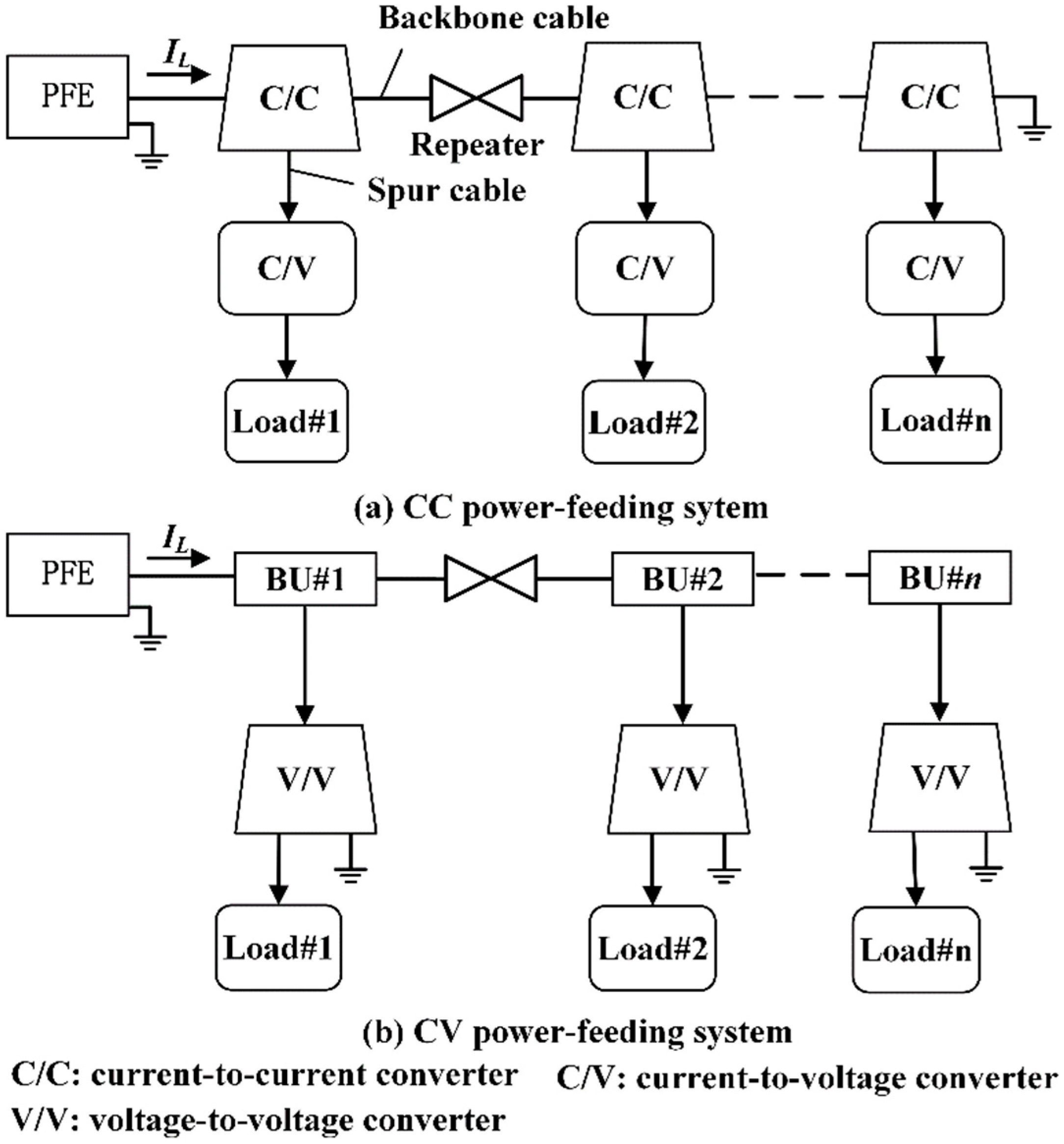

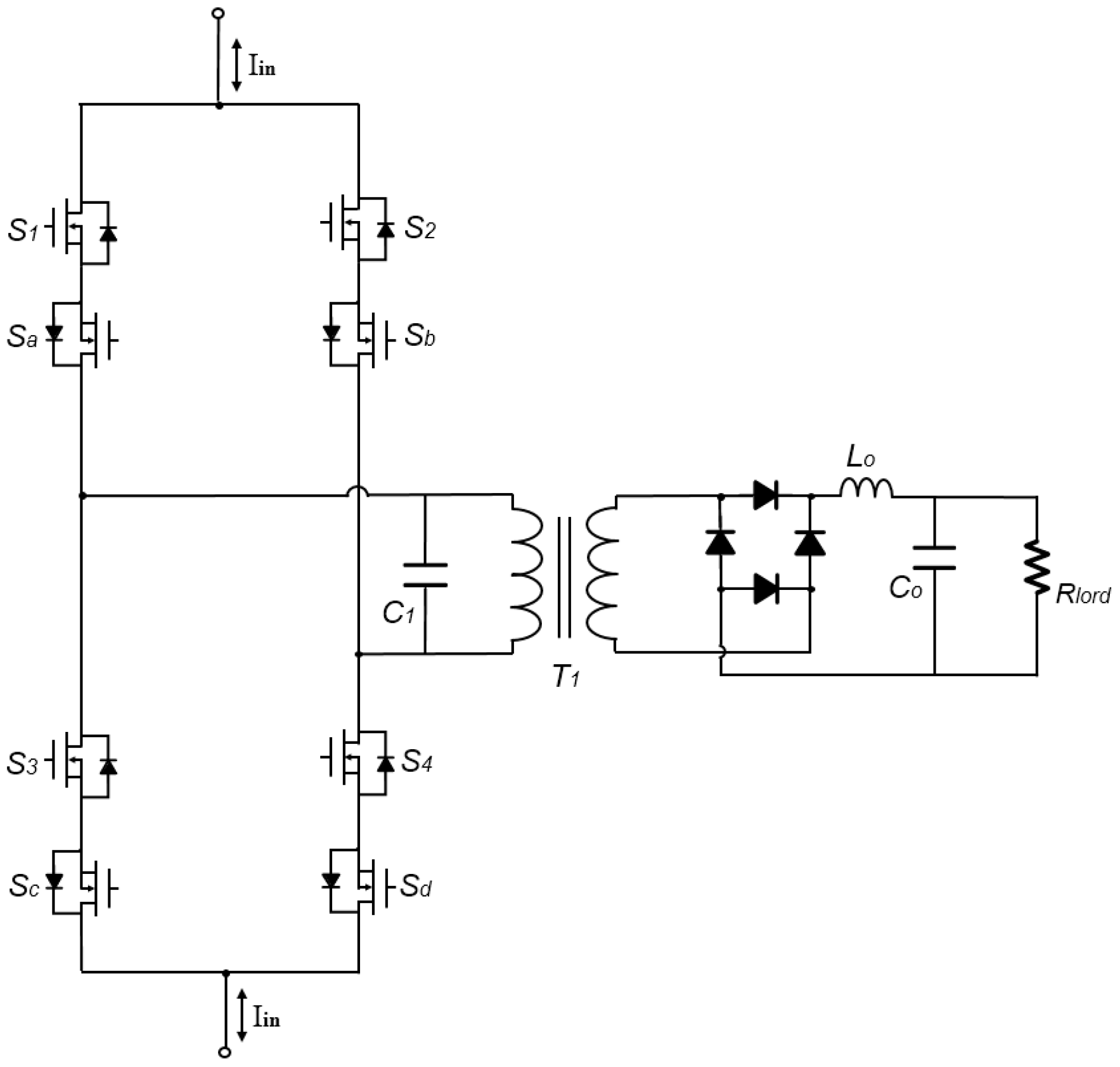

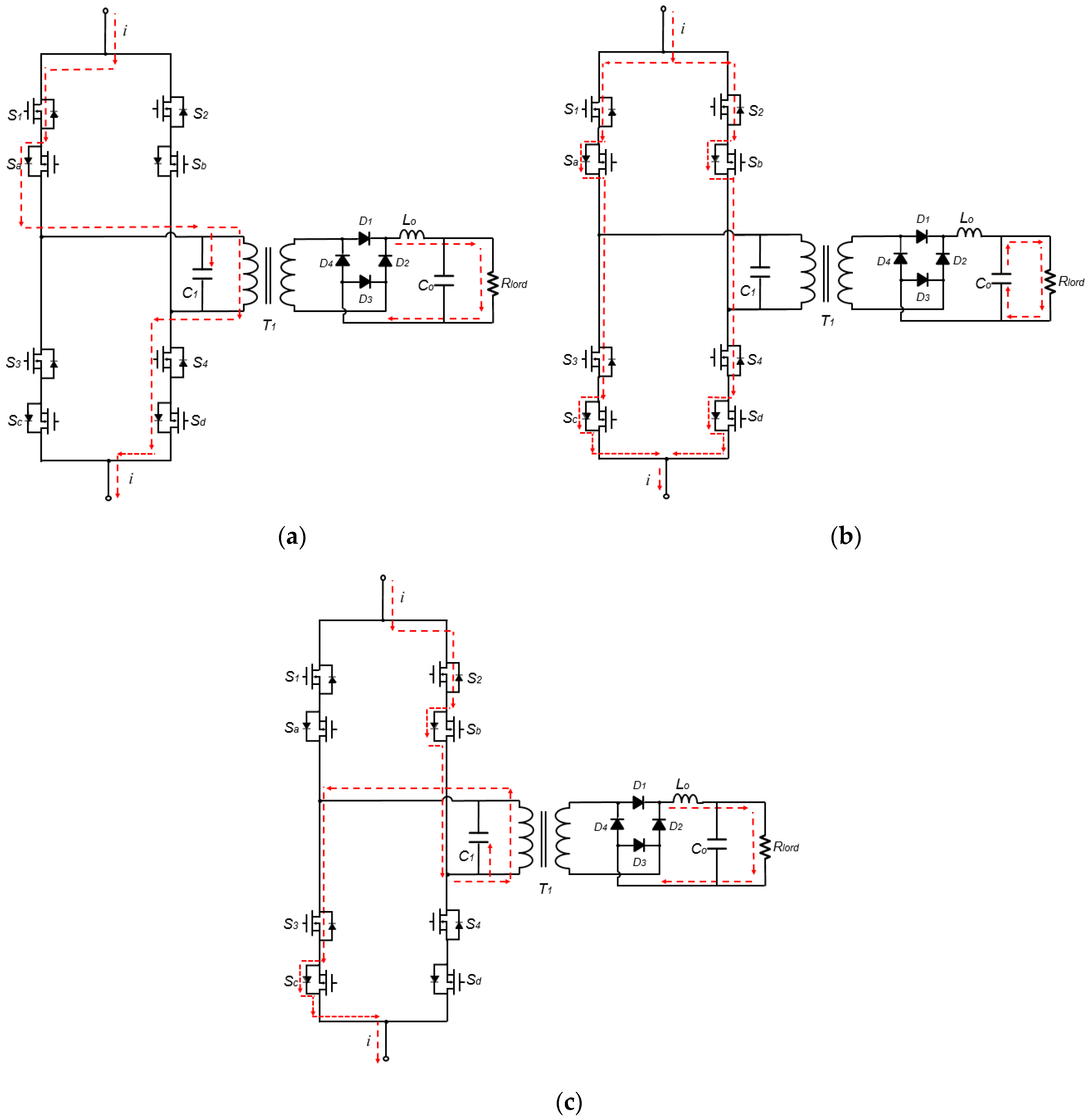
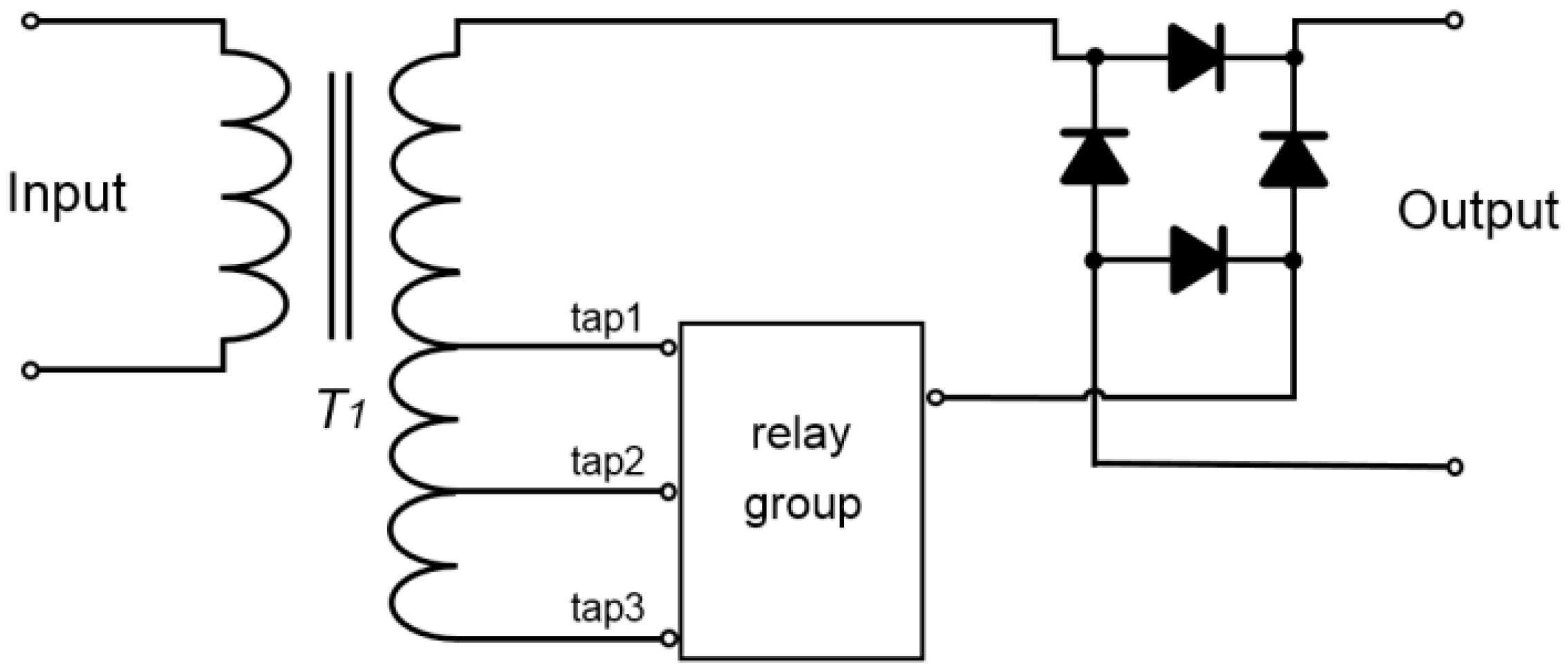





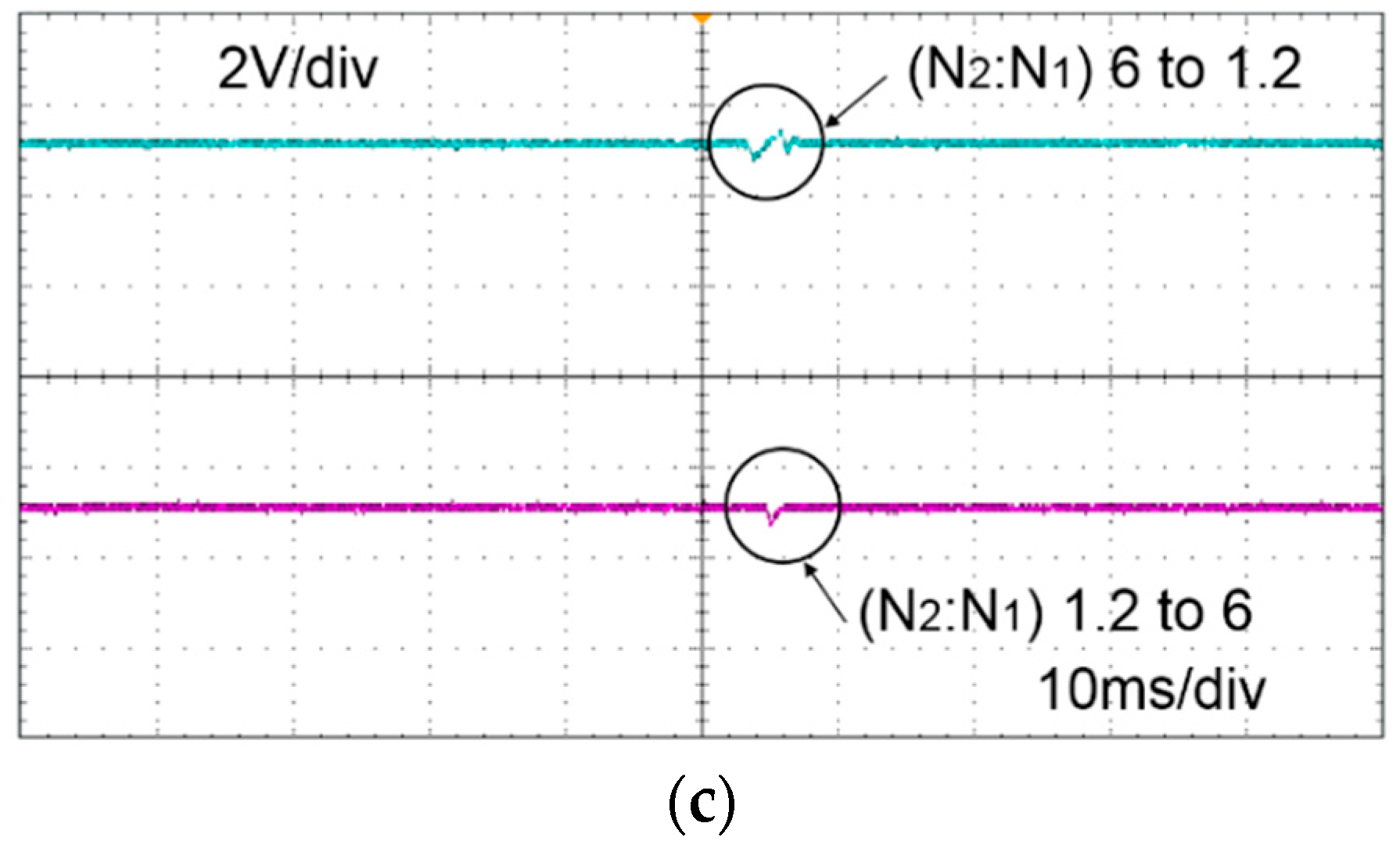

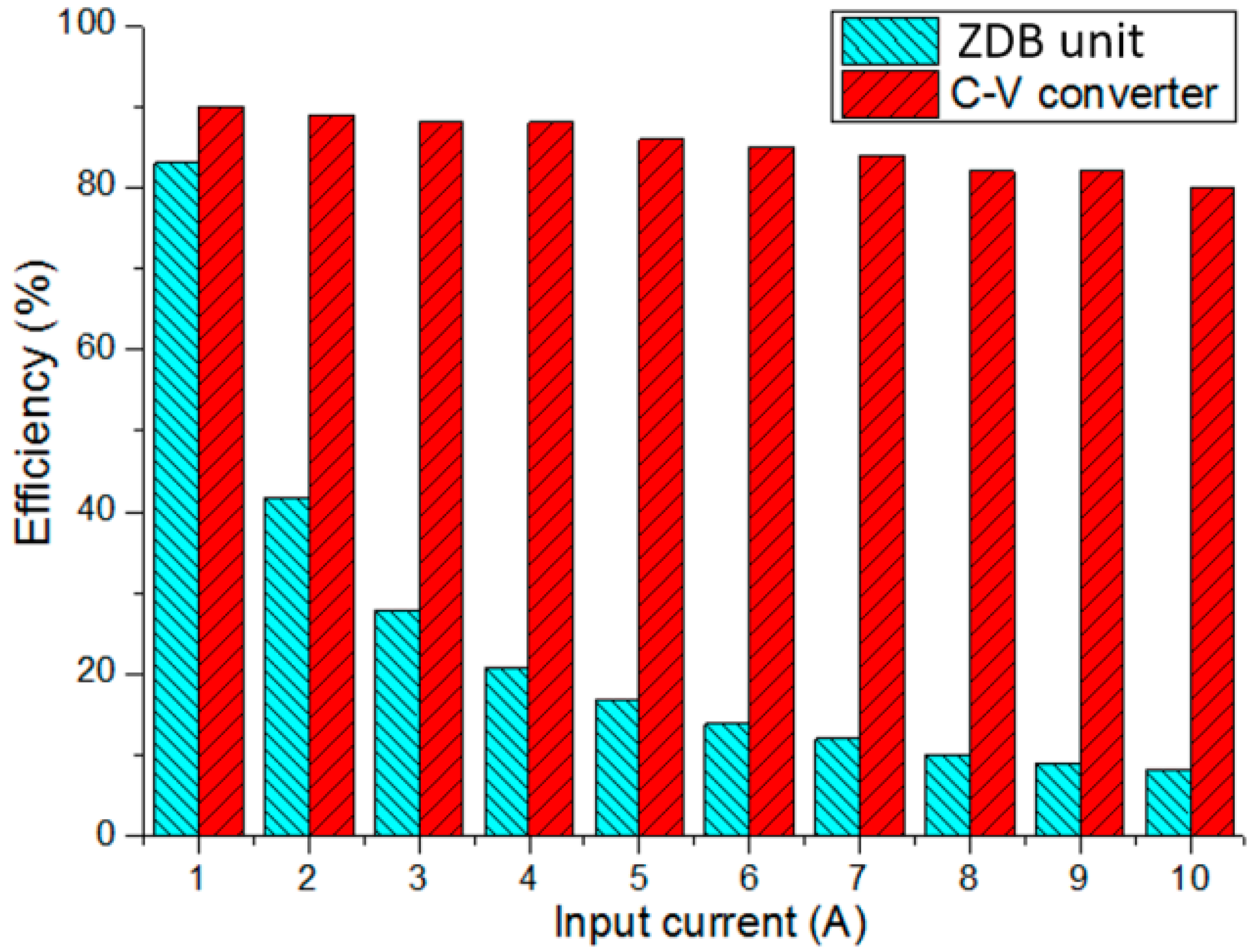
| Parameters | Values |
|---|---|
| Input current | 1–10 A |
| Output voltage | 12 V |
| Rated output power | 10 W |
| Capacitor C1 | 0.47 μF |
| Switching frequency | 40 kHz |
| Taps number | 10 |
| Minimum turn ratio | 1.2 |
| Maximum turn ratio | 12 |
© 2019 by the authors. Licensee MDPI, Basel, Switzerland. This article is an open access article distributed under the terms and conditions of the Creative Commons Attribution (CC BY) license (http://creativecommons.org/licenses/by/4.0/).
Share and Cite
Zhu, J.; Lyu, F. A Current-to-Voltage DC-DC Converter for Powering Backbone Devices of Scientific Cabled Seafloor Observatories. Energies 2019, 12, 2261. https://doi.org/10.3390/en12122261
Zhu J, Lyu F. A Current-to-Voltage DC-DC Converter for Powering Backbone Devices of Scientific Cabled Seafloor Observatories. Energies. 2019; 12(12):2261. https://doi.org/10.3390/en12122261
Chicago/Turabian StyleZhu, Jiayu, and Feng Lyu. 2019. "A Current-to-Voltage DC-DC Converter for Powering Backbone Devices of Scientific Cabled Seafloor Observatories" Energies 12, no. 12: 2261. https://doi.org/10.3390/en12122261





